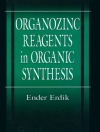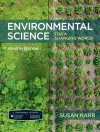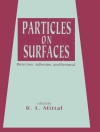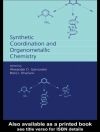Guides the reader through the interesting and useful aspects of cyanobacteria metabolism but will keep true to a biotechnology vision.
Das E-Book Cyanobacteria Biotechnology wird angeboten von Wiley-VCH Gmb H und wurde mit folgenden Begriffen kategorisiert:
Biochemical Engineering, Biochemische Verfahrenstechnik, Biotechnologie, Biotechnologie i. d. Biowissenschaften, Biotechnology, Biowissenschaften, Chemical Engineering, Chemische Verfahrenstechnik, Cyanobakterien, Life Sciences, Microbiology & Virology, Mikrobiologie, Mikrobiologie u. Virologie
สารบัญ
1 Inorganic carbon assimilation in cyanobacteria: mechanisms, regulation and engineering
1.1 Introduction – the need for a carbon-concentrating mechanism
1.2 The carbon-concentrating mechanism (CCM) among cyanobacteria
1.3 Regulation of Ci assimilation
1.4 Engineering the cyanobacterial CCM
1.5 Photorespiration
1.6 Concluding remarks
2 Electron transport inc yanobacteria and its potential in bioproduction
2.1. Introduction
2.2. Electron transport in a bioenergetic membrane
2.3. Respiratory electron transport
2.4 The role of electron sinks in photoprotection
2.5 Regulating electron flux into different pathways
2.6 Spatial organisation of electron transport complexes
2.7 Manipulating electron transport for synthetic biology applications
2.8 Future challenges in cyanobacterial electron transport
3 Optimizing the spectral fit between cyanobacteria and solar radiation in the light of sustainability applications
3.1 Introduction
3.2 The molecular basis and efficiency of Oxygenic Photosynthesis
3.3 Fit between the spectrum of solar radiation and the action spectrum of photosynthesis
3.4 Expansion of the PAR region of Oxygenic Photosynthesis
3.5 Modulation and optimization of the transparency of photobioreactors
3.6 Full control of the light regime: LEDs inside the PBR
3.7 Conclusions and prospects
4 What we can learn from measuring metabolic fluxes in cyanobacteria
4.1 Central carbon metabolism in cyanobacteria: an overview and renewed pathway knowledge
4.2 Methodologies for predicting and quantifying metabolic fluxes in cyanobacteria
4.3 Cyanobacteria fluxome in response to altered nutrient modes and environmental conditions
4.4 Metabolic fluxes redirected in cyanobacteria for biomanufacturing purposes
4.5 Synopsis and future directions
5 Synthetic biology in cyanobacteria and applications for biotechnology
5.1 Getting genes into cyanobacteria
5.2 Basic synthetic control of gene expression in cyanobacteria
5.3 Exotic signals for controlling expression
5.4 Advanced regulation: the near future
5.5 Conclusions
6 Sink Engineering in Photosynthetic Microbes
6.1 Introduction
6.2 Source and Sink
6.3 Regulation of Sink Energy in Plants
6.4 Engineered pathways as sinks in Photosynthetic Microbes
6.5 What are key source/sink regulatory hubs in photosynthetic microbes?
6.6 Concluding Remarks
7 Design principles for engineering metabolic pathways in cyanobacteria
7.1 Introduction
7.2 Cofactor optimization
7.3 Incorporation of thermodynamic driving force into metabolic pathway design
7.4 Development of synthetic pathways for carbon conserving photorespiration and enhanced carbon fixation
7.5 Summary and future perspective on cyanobacterial metabolic engineering
8 Engineering cyanobacteria for efficient photosynthetic production: ethanol case study
8.1 Introduction
8.2 Pathway for ethanol synthesis in cyanobacteria
8.3 Selection of optimal cyanobacteria ?chassis, ? strain for ethanol production
8.4 Metabolic engineering strategies toward more efficient and stable ethanol production
8.5 Exploring the response in cyanobacteria to ethanol
8.6 Metabolic engineering strategies to facilitate robust cultivation against biocontaminants
8.7 Conclusions and Perspectives
9 Engineering cyanobacteria as host organisms for production of terpenes and terpenoids
9.1 Terpenoids and industrial applications
9.2 Terpenoid biosynthesis in cyanobacteria
9.3 Natural occurrence and physiological roles of terpenes and terpenoids in cyanobacteria
9.4 Engineering cyanobacteria for terpenoid production
9.5 Summary and outlook
10 Cyanobacterial biopolymers
10.1 Polyhydroxybutryate
10.2. Cyanophycin granules in cyanobacteria
11 Biosynthesis of fatty acid derivatives by cyanobacteria: from basics to biofuel production
11.1 Introduction
11.2 Overview of fatty acid metabolism
11.3 Basic technologies for production of free fatty acids
11.4 Advanced technologies for enhancement of free fatty acid production
11.5 Hydrocarbon production in cyanobacteria
11.6 Advanced
เกี่ยวกับผู้แต่ง
Paul Hudson is an Associate Professor (2018) of Metabolic Engineering in the School of Engineering Sciences in Chemistry, Biotechnology, and Health at the Royal Institute of Technology (KTH) in Stockholm Sweden. He has a Ph.D. degree in Chemical Engineering from U.C. Berkeley (2009). He has published 26 research papers in the fields of protein science, microbial metabolic engineering, and systems biology. The main focus of his research is on systems and synthetic biology of cyanobacteria.












